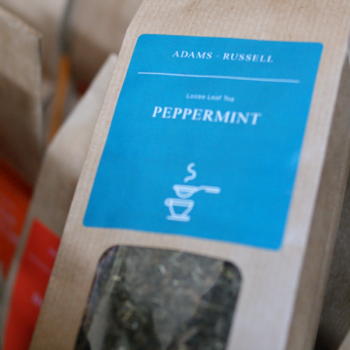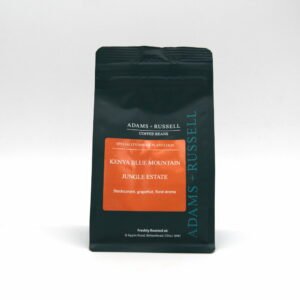Where do the main types of tea come from?
- Updated on: March 7, 2024
- Written by: Aimee Bennett
Aimee is a coffee enthusiast and has worked in the coffee industry for years. She sources coffee beans from around the world and her coffee journey began in… (read more).

Tea is one of the most popular drinks in the world today. In the UK in particular we drink it at almost any time of day and enjoy it with or without various different kinds of food – it is a real staple of many people’s everyday life.
Drinkers also enjoy it in all sorts of different ways. From a long-stewed builder’s brew to a delicate Earl Grey with a slice of lemon added. Everyone has their favourite flavour, brand and strength.
But have you ever wondered ‘where does tea come from?’
In this article we take a look at whatit is, explore its origins, discuss some of the different types and explain the regions of the world that grow the herbaceous crop today.
What is tea?
Before we take a closer look at where it came from, let’s first understand what tea actually is.
Basically, the beverage we all know and love is a drink made by pouring water over the leaves of an evergreen shrub called Camellia sinensis which is native to East Asia.
As you know, usually the water is hot so that the flavour of the leaves infuses well, and the beverage is then served while still warm, but this isn’t always the case.
The shrub is more commonly known as the “tea -plant”, “-shrub” or “-tree” and its leaves are carefully prepared before being used to make the drink in a multi-stage process.
The preparation involves drying, shaping and curing the leaves in a manner that keeps the flavour so it can be released when water is applied, while removing the bitterness and any impurities.
This process helps preserve the leaves, and as you know it can last a very long time (unless the family have been to stay of course), but it also has an impact on the flavour, as explained in the next section.
The main types of tea

Although all tea comes from Camellia sinensis there are five main types that are distinguished by their harvesting and preparation process. These are:
- Black – the most common variety; fully oxidised leaves with the highest caffeine content and strong flavour. This is probably the tea you are most used to drinking.
- Green – unoxidised leaves that are prepared in a manner that preserves many of the minerals, vitamins and antioxidants which provide us with health benefits.
- Oolong – a semi-oxidised variety that can taste more similar to black or to green depending on how long the oxidisation lasts.
- White – the least processed variety and featuring a mild flavour and very little caffeine. It also has high levels of minerals and antioxidants too.
- Pu-erh – an earthy variety from the Yunan province of China and made from wild, not cultivated, grown leaves. Pu-erh can be prepared in different ways so, depending on the oxidisation process, may be black or green.
Flavoured teas are then made by adding additional ingredients to one of these basic varieties to form well known drinks such as Earl Grey, Masala Chai, jasmine or lemon/ginger tea.
To make these different beverages natural flavours such as herbs, fruits, and flowers are infused with the leaves during preparation.
This longevity, the taste, health benefits and ease with which light, processed loose leaf and bagged tea can be shipped around the world have made it an amazingly successful export product – in fact it is the second most widely consumed drink in the world after water!
But how did this whole phenomenon begin?
Where does tea originate from?
According to legend an ancient Emperor of China known as Shennong had decreed that his subjects must boil water before drinking it.
One day, he was drinking from a bowl of recently heated water himself when a gust of wind blew a handful of leaves loose from a nearby tree which landed in his liquid.
After taking a sip the emperor was pleasantly surprised by the taste and felt the restorative properties of the beverage – and the drink was born.
Although this is a legend only of course, it is believed that tea does come from the Yunnan province of Southwest China originally.
If you were to ask people ‘where did it originate?’ the chances are that many of them wouldn’t immediately think of China, but historical records indicate that it was first used as a medicinal drink during a Bronze Age empire known as the Shang Dynasty.
It was also mentioned in a medical text written by a physician called Hua Tuo in the 3rd century AD which is considered by historians to be a very credible account and strong piece of evidence for the drink’s origins in this part of the globe.
How tea conquered the world
From this beginning tea spread to more than 50 different neighbouring and trade-connected countries over the centuries, gradually being introduced to new cultures and peoples as trade routes opened and explorers travelled further from home.
In the UK the first recorded sale was in 1657 when a Thomas Garway (described as a “tobacconist and coffee-man”) offered bags for sale from his house in Exchange Alley in London.
By the 1720s it was a hugely important import product for Great Britain, even shaping global geopolitics at the time.
To break China’s monopoly on the product, tea plants smuggled out of China were planted by the British in India. Vast plantations were soon established in places such as Darjeeling.
These initial farms, along with the discovery of native plants growing in India, led to the growth of tea-making in the sub-continent, as well as shaping some of its long and complicated relationship with the UK.
Many people today think of India when asked where did tea come from, as it has been so central to the industry in the country and is still grown there in significant quantities.
Where is tea grown today?
Although a truly global product, today the majority of tea is grown in just four countries; India, China, Kenya and Sri Lanka.
Together these four nations make up around 75% of global production.
In total about 40 countries produce tea and these are mainly situated in Asia, South America, Africa and around the Caspian and Black Seas.
All of these nations are major exporters of the product, except interestingly Japan whose domestic consumption is so high that they export very little.
In the UK today you can purchase loose leaf and bags from all different countries and in a wide variety of flavours, brands and styles.
In conclusion
As you can see, the answer to the question ‘where is tea from’ is a very complicated and interesting one, showing the rich international heritage of this popular drink.
And it truly is popular; there’s a decent chance that if you’re reading this post your last cup of tea was only a matter of hours ago!
We all have our favourite flavours and preparation steps for the best beverage, but it is also great to try out different drinks that people enjoy around the globe.
So next time you’re making yourself a cuppa or choosing a flavoured tea from the array of products on offer at the supermarket, remember the rich history of those unassuming bags!





